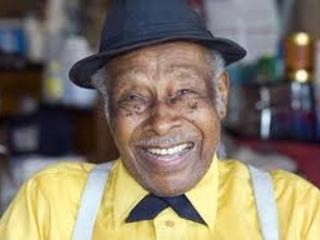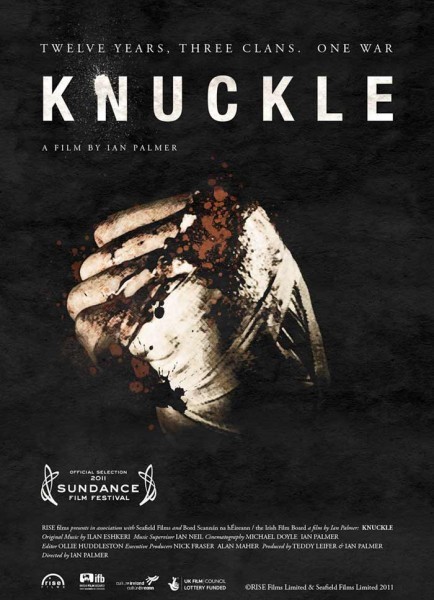Sundance Film Festival Two
Recruiting Isabella Rossellini
By: Jon Goldman - Jan 31, 2011
January 22
This is my second Sundance experience in two years, and both times I had the fortune of being hand-led throughout by seasoned attendees, in both cases with the same film project in tow. These projects can often take five years to bring to fruition and it is largely through the consistency of these festivals and the networking that happens at them that they get produced.
The first time I attended was 2009 and I was here with my former producing partner who was based in North Carolina and had been attending Sundance for at least a decade. He had just produced a powerful film about race in America called Moving Midway, about a film critic who in the course of moving his family's historic North Carolina home he meets the African American family he never knew he had. These African American cousins descended from the slaves who did the actual construction of the plantation home.
In 2011 I am still working on my film, Oil in The Family, about my search to understand my family's connection to the oil industry through the interactions of my maternal grandmother and her friend, Robert Flaherty the father of American documentary.
The 2009 festival introduced me to the inner glow of the Festival through invitation-only parties that someone with a list circulates, and somehow you become someone's "Plus One". It also introduced me to Slamdance and a slew of interesting work for those creating work which has not been accepted by Sundance. It providesother worthy filmmakers with an opportunity of screening instead of looking into the window with their noses pressed against the glass.
It is a focused search for a major break rejection, and the hope of possibility; of an opportunity to have a vision realized that anyone with a project under their arms and a pitch in their heart are looking for.
2009 ultimately offered that opportunity to me with a meeting with a former head of the Sundance festival, who would agree to be an executive producer on the film. Momentum had been established in Park City, and carried back to the East coast with further meetings in Manhattan. Then her mother fell sick in France, her father-in-law did too, and he soon thereafter passed on. Not too long after that, her mother passed away in France. All of this pinnacled for me with the death of the US economy in general when my new Executive Producer had to take a step back.
It is the nature of the mountainous road of filmmaking where one’s mantra becomes “and these things take time….” I keep telling myself "it is a process and progress happens in cycles and bursts of creative momentum.”
I spent the next year and half searching for another Executive Producer, even though I was still furiously trying to fundraise with the connections I had.
I returned this year, 2011, because as a filmmaker it is critical to continue to build connections, get out there and network.With all the horrors of the Gulf Spill last spring, the topical subject of my film had evolved to be both timely and fresh in the public’s mind. Oil in The Family was not only pertinent but its window of opportunity was now. In 2009 I met Robert Redford at a Sundance party. He too was also a friend of my grandmother. I told him very briefly about the project to which he responded: "sounds like a great idea". I returned this year with a host who knew him personally and would try to help out.
The screening,parties and musical venues are spread out over three main areas. Salt Lake City is one, Park City/Deer Valley another, and Sundance, the original little village where we would stay in a wooden cabin nestled into a mountainside and next to a small rambling brook. While much of the hustle and bustle happens at Park City, and was where I was stationed in 2009, this year provided a completely different viewpoint.
My host loves cinema and it has rubbed off on her nineteen-year old quadriplegic son, Andrew. He is an aspiring filmmaker and University of Rhode Island freshman. He has just finished shooting his first feature which he has amazingly written and produced with his nose (about eighty pages). I have just assembled a rough edit for him.
Andrew and his valiant mother have been to Sundance five years in a row, and our little cabin is a simple walk for me down to the Screening Room. His mother usually drives him to choice parking spots. Although we all complain about the overly complex nature of this SUV, when it comes to storing the wheelchair, everyone is thankful for the huge and easily accessible storage compartment.
We become a skilled wheelchair team. In his wheelchair, Andrew is easily recognizable. He has a spot in every film we can get a ticket for. He also has an insatiable commitment to meeting as many filmmakers whose work he sees, and has a picture taken with them. He has that kind of magnetism that is disarming, and that engenders people to him.
Sunday, 23 January
In all, we will view eleven films over the course of five days an almost dizzying pace for most folks. Today we see Knuckle a film from Ireland about the Travellers, or Ireland's version of the Romani or gypsies. This nomadic group who has been waging internal fights between clans in brutal fisticuffs between family members. The filmmakers followed two families, the Joyce’s and the Mcdonough’s for ten years as a kind of Irish version of the Hatfields and the McCoys,
We see the fights first hand and they are ugly, seemingly endless in their stupidity and raw brutality. But it is an almost ethnographic recording of the events. In the post discussion it is unfortunate when the filmmaker explains a bit more about the Travellers, which would have been better served placed into the film itself, instead as a Q&A illumination.
The heartfelt women, in one late part of the film, reveal the only intelligence in the clans, that the fighting serves no one any good. It’s bullheadedness is part and parcel of the patriarchal society. The final scenes of a decade-long feud coming to an end are poignant. The images of little boys, post-fight imitating their father’s shadow boxing, conveys a lasting impression. They too will carry on the fighting at the slightest provocation.
Later in the day I see the documentary Showcase ll which has for me two powerful films which stand out for the rest of the festival:
Living for 32 follows Colin Goddard one of the survivors of the rampage killings at VIrginia Tech. He was shot five times and recovered to become part of the gun-control loophole fight as an activist/lobbyist in D.C. He travels to college campuses to try to change people's minds about guns. He was someone who was in the right place at the wrong time, French class, where many of his classmates (32) and his teacher were killed. It is a film that invites discussion about second Amendment rights. It evokes the unbelievably ridiculous unmonitored ease and availability of weapons at gun shows. It conveys his valiant lobbying to change hearts and minds about legislation allowing background checks for those with clear mental disabilities and what a challenge that is. The currency of this issue in light of the recent shootings in Arizona, has real resonance. It defines us as Americans and challenges all aspects of gun ownership.
The next in the series is Animals Distract Me.
Isabella Rossellini is beautiful, charismatic and hysterically funny both as a filmmaker/writer and as a collaborative force. Her film is so perfect I can almost not contain myself about it.
I spoke to her about coming to Woods Hole where I help run the Woods Hole Film Festival, now entering its twentieth year. She graciously suggested she would. Woods Hole is a world center for Marine Biology and Oceanographic study.
Rossellini informs me that her son wants to be a marine biologist. She lives on Long Island, and her film follows her fascination with animals, covering everything from dogs, to butterflies, to Darwin, sharks and tuna. She appears cleverly disguised as Darwin. Campbell Scott provides the Voice Over in a series of fascinating riffs about genetics, survivability, animal’s heightened sense of smell and other evolutionary essentials.
She wrestles with our food culture as many of us do, from mass produced to the free range, and all the while totally cracking us up with her bemused observations. The clever use of puppetry and paper-constructed backgrounds are refreshing both for their inventiveness and for their simplicity in advancing the story. She has a great original voice, a quirky and voluminous sense of inquisitiveness which is both completely engaging and accessible.
We meet outside of the Screening Room in waning rays of sunlight. It is in this kind of informal meeting on the snow-encrusted paths outside a venue that makes Sundance both enchanting and accessible. I have made it my mission to try and bring her to Woods Hole and to be a central part of our important twentieth celebrations. It is this kind of inspiration that, as a filmmaker and a programmer, I seek when traveling to these remote and pivotal places for film.
The last of this series, The Barber Of Birmingham, is another reason to visit a festival like this. It is learn about parts of history that you were not aware of.
There are always unsung heroes, those people who are the nameless who lead by the passion of their convictions. They are the footsoldiers of revolutions they are part of. This short doc profiles an African American barber from Birmingham, Alabama. He has known, marched with, met, or cut the hair of many of the leaders of the civil rights struggle. Walking the walk he enrolls his own sons in the first integrated school in Alabama.
This is an intimate profile of someone who lived the life of the struggle and who completely celebrates his ability to vote, the fact that he has lived to see the first Black President and to have witnessed so much change in his lifetime. While covering the same territory as the Belafonte tribute film, it is about the unknown forces behind “the struggle”; the little guy whose tirelessness for his cause has NOT relied on celebrity to carry the day.
This is a Chicken and Egg Production and I spoke at length to Judith Helfand who runs that company. We discus the possibility of a master class and possibly screening opportunity for Barber in Woods Hole. She tells me of the additional poignancy of this film being that both the late director Gail Dolgin’s final wish was that the film be finished. Not only was it finished but it was selected to show in this prestigious grouping. The standing ovation for both the late Barber himself, Mr. Armstrong, his sons and grandsons in the audience and for Ms. Dolgin was both rousing and emotional providing further impetus for those in the audience to see themselves part of something larger.




